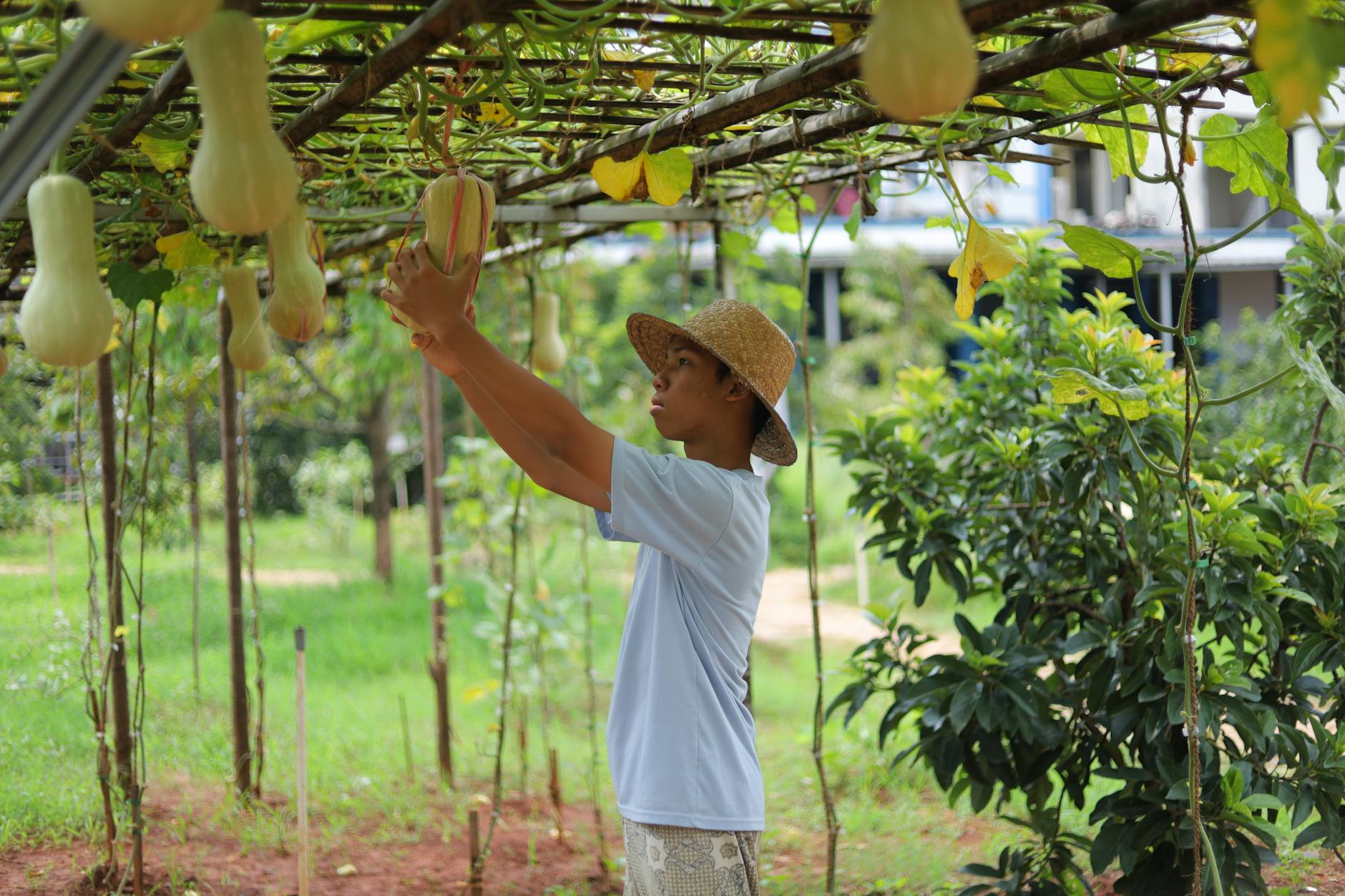Garden Trellis Ideas: 10 Creative Designs for Every Space
Transform your outdoor space with these creative trellis designs that combine beauty and functionality for any garden style

Why Trellises Are Essential for Garden Design
A trellis is more than just a practical support structure for climbing plants; it’s an opportunity to add architectural interest and vertical dimension to your garden. Whether you have a sprawling backyard or a compact patio garden, incorporating trellises can dramatically transform your outdoor space by drawing the eye upward and creating a sense of depth and intrigue. From rustic wooden panels to elaborate metal arches, the right trellis can become a stunning focal point while also serving the functional purpose of supporting your favorite climbing plants, from flowering vines to productive vegetables.
The beauty of garden trellises lies in their versatility. They can be positioned against walls to soften harsh surfaces, used as dividers to create garden rooms, or installed as freestanding structures to add height to otherwise flat garden beds. As plants grow and intertwine with the structure, the combination creates a living sculpture that changes with the seasons, offering different visual delights throughout the year.
Panel Trellis Designs: Functional and Versatile
DIY Moveable Container Plant Trellis
For gardeners with limited space or those who want flexibility in their garden design, a moveable container plant trellis offers the perfect solution. This clever design combines a sturdy container with a vertical structure, allowing you to grow climbing vegetables like cucumbers, beans, and tomatoes without requiring garden beds. The mobility factor is particularly advantageous, as you can reposition your plants to optimize sunlight exposure or protect them from harsh weather conditions.
When temperatures drop unexpectedly or hungry nighttime critters threaten your harvest, simply wheel your container trellis into a greenhouse or indoors. This design is also ideal for gardeners with physical limitations who benefit from having plants at an accessible height. Consider adding casters to the bottom of a large container and securing a wire or wooden lattice to create your own moveable vertical garden.
Vintage Fence Trellis
Transform a piece of garden history into a charming trellis by repurposing vintage fence sections. This upcycling approach not only adds character to your garden but also gives new life to architectural salvage. Simply lean a decorative fence piece against a wall or secure it more permanently for a quick and visually interesting support for climbing plants.
Wrought iron fence sections, weathered wooden picket fences, or ornate garden gates make particularly striking trellises. Scour flea markets, antique shops, or architectural salvage yards to find unique pieces that complement your garden’s aesthetic. Once installed, plant climbing roses, clematis, or honeysuckle at the base and watch as nature embraces the vintage structure, creating a beautiful blend of history and horticulture.
Arch Trellis Designs: Creating Garden Gateways
DIY Pergola Trellis
For a more substantial architectural element in your garden, consider installing a pergola trellis. These structures not only provide excellent support for vigorous climbers like clematis, wisteria, or grape vines but also create inviting, shaded spaces beneath. A pergola can transform a simple patio into an outdoor room or define a pathway through the garden.
Before embarking on this project, proper planning is essential. Contact your local utilities to mark the location of underground lines, as you’ll need to sink the posts at least one-quarter of their height into the ground for stability. Choose naturally rot-resistant woods like cedar or redwood for longevity, or consider metal or vinyl alternatives for a maintenance-free option. As vines grow across the top, they create dappled light below, perfect for relaxing on hot summer days.
Series of Garden Archways
Create a sense of journey and discovery in your garden by installing a series of archways along a path. These structures can be placed between raised beds to guide visitors through a vegetable garden or positioned at entry and exit points to define different garden rooms. Beyond their decorative appeal, arch trellises are ideal supports for climbing vegetables and legumes, bringing both productivity and romance to a kitchen garden.
For a cohesive look, use matching materials and designs for each arch, or create visual interest with varied styles that share a common element, such as color or material. Plant different climbing varieties on each arch to create changing seasonal displays as you move through the garden. The repetition of forms creates rhythm and structure, while the plants add softness and color.
Obelisk Trellis Designs: Vertical Accents
DIY Branches-and-Twine Trellis
Embrace natural materials and rustic charm with a branches-and-twine trellis. This simple yet effective design utilizes foraged sticks from your garden, such as poplar or birch saplings, tied together at the top with natural twine. The result is a tepee-like structure that provides support for lightweight annual climbers.
While this design isn’t suitable for heavy plants like squash or mature perennial vines, it works beautifully for delicate annuals such as sweet peas, morning glories, or black-eyed Susan vine. The irregular shapes and natural materials blend harmoniously with the garden environment, creating a whimsical, organic look. Best of all, this trellis can be constructed with no cost using materials found in nature, making it both economical and environmentally friendly.
A-Frame Wooden Trellis
The classic A-frame wooden trellis combines simplicity, functionality, and attractive design. This freestanding structure provides excellent support for vegetables like cucumbers, peas, and beans, while its compact footprint makes it suitable for smaller gardens or raised beds. For added climbing support, consider tying twine between the wood slats, giving tendrils additional places to grip.
One of the greatest advantages of the A-frame design is its collapsibility—when the growing season ends, many models can be folded flat for easy storage. This feature is particularly valuable in regions with harsh winters where you might want to protect your garden structures from the elements. Choose naturally rot-resistant wood or apply a non-toxic sealant to ensure your trellis lasts for multiple growing seasons.
Wall Trellis Designs: Transforming Vertical Surfaces
Simple Backyard Wall Trellis
One of the most effective uses of trelliswork is its ability to transform an unsightly wall into a living tapestry of greenery. A simple wire lattice attached to a wall provides the perfect framework for delicate vines to climb and spread. This approach works particularly well in urban settings or courtyards where space is limited but vertical surfaces are abundant.
When selecting plants for a wall trellis, consider the exposure (sun or shade) and choose appropriate climbers. Self-clinging vines like Boston ivy or climbing hydrangea may not need the trellis structure once established, while twining vines like jasmine or climbing roses will use the support throughout their lives. Combine your wall trellis with container plantings at the base to create a multi-layered green display that softens hard architectural lines.
Espaliered Fruit Trellis
For the gardener who appreciates both beauty and productivity, an espaliered fruit trellis represents the perfect marriage of form and function. This traditional technique involves training fruit trees to grow flat against a wall or fence in decorative patterns. Beyond its ornamental value, espaliering makes fruit easier to harvest and allows you to grow fruit trees in spaces too small for standard trees.
A rustic brick wall provides an ideal backdrop for this gardening art form, offering warmth and texture that complements the organized branches of the trained tree. Apple and pear trees are traditional choices for espalier, but many other fruit trees can be adapted to this method. The geometric patterns created—whether a simple horizontal cordon or an elaborate candelabra design—add striking visual interest to the garden throughout the year, from bare architectural branches in winter to blossoms in spring and fruit in summer and fall.
Specialized Trellis Designs for Specific Plants
Multi-Functional Vegetable Trellis
For the productive garden, a sturdy multi-functional trellis can transform how you grow vegetables. Using materials like hog wire secured with T-posts creates a structure strong enough to support heavy vines like butternut squash or indeterminate tomatoes. When designed as an arch over a garden path, these trellises create enchanting green tunnels while maximizing growing space in limited areas.
These robust structures can serve double duty throughout the seasons. In winter, covering the frame with plastic creates a protective greenhouse for extending your growing season. The elevated growing position also improves air circulation around plants, reducing disease problems, while keeping fruits and vegetables off the ground protects them from soil-borne pathogens and pests. For the ultimate in garden efficiency, position these trellises to create shade for heat-sensitive crops during summer months.
Low Trellis for Creeping Vines
Not all trellises need to reach for the sky. A low trellis design provides perfect support for ground-hugging plants like cucumbers, melons, or decorative ground covers. Positioned between deck and patio areas, these shorter structures create gentle barriers while enhancing the garden’s visual topography when viewed from inside the house.
This design works particularly well for grape vines, which benefit from the excellent air circulation and sun exposure provided by a lower support. The horizontal orientation makes harvest especially convenient, with fruits developing at an accessible height. In ornamental gardens, low trellises can define the edges of paths or create transitions between different garden areas while supporting flowering vines that add color and fragrance at knee or waist height.
Creative Material Choices for Trellises
The materials you choose for your trellis not only affect its durability and functionality but also contribute significantly to your garden’s aesthetic. Traditional wooden trellises offer warmth and natural beauty, while metal designs provide industrial charm and exceptional longevity. For eco-conscious gardeners, repurposed materials like old ladders, bicycle wheels, or bed springs can be transformed into unique trellises that add personality and reduce waste.
Consider the weight of the plants you’ll be growing when selecting materials. Lightweight annual vines may only need bamboo stakes or twine supports, while perennial climbers like wisteria require substantial structures that can withstand their impressive weight and growth force. The color of your trellis also matters—dark colors recede visually and showcase plants better, while brightly colored trellises become features in their own right, adding interest even when plants are dormant.
Seasonal Considerations for Trellis Gardens
A thoughtfully designed trellis garden provides interest throughout the year. Plan your planting with all seasons in mind—spring-flowering clematis can give way to summer roses, followed by fall color from ornamental grapes or ivy. Even in winter, the architectural framework of your trellises adds visual structure to the garden when plants have died back.
In colder climates, consider how your trellises will weather the winter months. Some designs may need to be stored or protected, while others can remain in place year-round. Evergreen climbers like certain ivies or winter jasmine can provide green interest even in the coldest months. For vegetable gardens, rotating crops on trellises helps prevent disease buildup and maintains soil health for sustained productivity year after year.
Frequently Asked Questions About Garden Trellises
What are the best plants for trellises?
The best plants for trellises depend on your climate, sun exposure, and the strength of your trellis. For lightweight structures, choose annual vines like morning glory, sweet peas, or black-eyed Susan vine. Medium-weight trellises can support climbing roses, clematis, honeysuckle, and most vegetable vines. Reserve your sturdiest trellises for vigorous climbers like wisteria, grapes, and mature kiwi vines that become quite heavy over time.
How do I maintain a trellis garden?
Maintain your trellis garden by regularly checking the structure for stability, especially after storms or when supporting heavy plants. Prune climbers according to their specific requirements—some need hard pruning in winter, while others should only be trimmed after flowering. Clean wooden trellises and apply preservative every few years to extend their life. For metal trellises, check for rust and touch up paint as needed. Train young plants by gently tying stems to the trellis until they establish their climbing pattern.
Can I build a trellis myself without carpentry skills?
Absolutely! Many trellis designs require minimal tools and carpentry skills. Start with simple projects like the branches-and-twine obelisk or a bamboo teepee trellis. Pre-fabricated trellis panels from garden centers can be installed against walls or fences with basic hardware. For more complex structures, consider modular systems that bolt together without requiring advanced woodworking. Repurposing existing items like old ladders, metal headboards, or window frames creates unique trellises with very little construction effort.
How tall should my trellis be?
The ideal height for your trellis depends on what you’re growing and where it’s positioned. For most ornamental vines, 6-8 feet is sufficient, while some vegetables like pole beans can easily climb 10 feet or more. Consider your own height when designing vegetable trellises—you should be able to comfortably reach the top for harvesting. For trellises against houses, keep them below window height unless you specifically want to frame or cover windows. Free-standing trellises should be proportional to surrounding garden features and secured properly to prevent toppling in wind.
How do I prepare my soil for trellis plants?
Prepare soil for trellis plants by incorporating plenty of organic matter like compost to improve fertility and drainage. Most climbing plants have extensive root systems and appreciate deeply worked soil. For permanent trellises supporting perennial vines, consider adding slow-release fertilizer at planting time. Ensure adequate moisture, particularly at the base of walls where rainfall may not penetrate effectively. Mulch around the base of climbing plants to conserve moisture and suppress weeds that would compete for nutrients.
References
- https://www.countryliving.com/gardening/garden-ideas/g31025071/trellis-ideas/
- https://www.countryliving.com/gardening/garden-ideas/g1456/fast-growing-vines/
- https://www.southernliving.com/trellis-ideas-7229638
- https://www.bhg.com/vegetable-trellis-ideas-11700902
- https://www.elledecor.com/design-decorate/room-ideas/g43446079/garden-trellis-ideas/
Read full bio of medha deb











